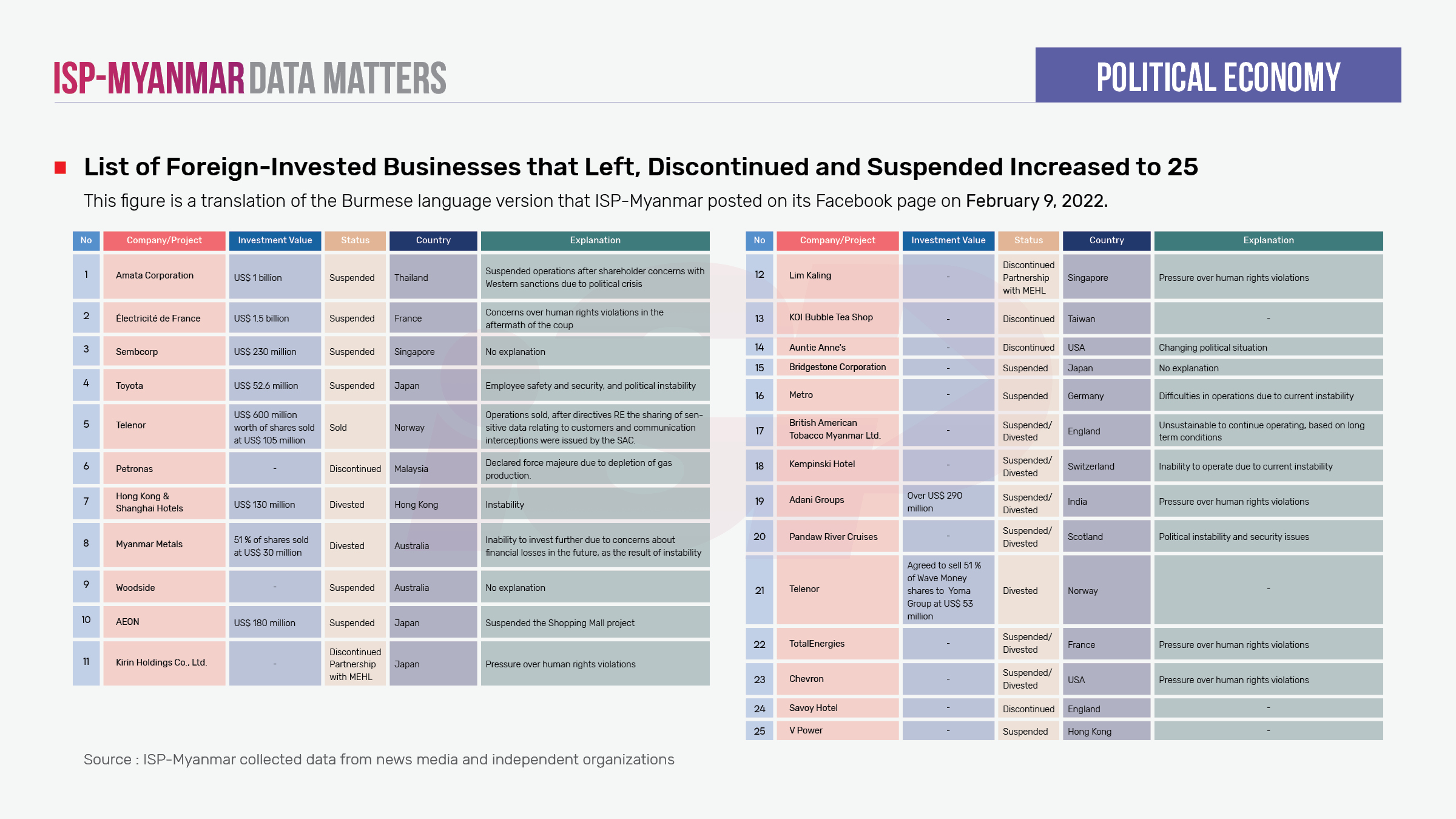ISP Data Matters No. 4
(This article is a translation of the original Burmese language version that ISP-Myanmar posted on its Facebook page on February 9, 2022.)



In the aftermath of the coup, more than 73 percent of the foreign investment in Myanmar comes from from China. The remaining 27 percent is split between Japan, Singapore, Thailand and South Korea. Less than a year after the coup, from February 2021 to the end of January 2022, there was over US$ 3.62 billion of foreign investment in Myanmar. However, the total value of foreign investment projects that shut down in that time was approximately US$ 4.06 billion.
This constitutes a sixfold increase in Chinese investment since the coup. Compared to the FY 2019-20, the total volume of Chinese investment increased by more than US$ 2.1 billion in the following FY (2020-21). More than US$ 3.1 billion was invested in Myanmar’s energy sector alone during the FY 2020-21. This includes the US$ 2.5 billion China-backed Mee Lin Gyaing power project, registered in the British Virgin Islands.
∎ Why does it matter?
Foreign investment is an important economic pillar for developing countries, but not all kinds of foreign investment guarantee economic growth. If the investments are resource-exploitative, inconsiderate of the environment, inconsiderate of human rights, and do not improve the livelihoods of the local people, they could further deteriorate the development of the country and cause further impoverishment and vulnerability among Myanmar people. This has been the case throughout successive military regimes in Myanmar. The information concerning which countries are currently investing in Myanmar and what kind of investments are entering the market is key to understanding the involvement of other countries in the current political crisis. Moreover, foreign investments have a direct impact on the long-term sustainable development of the country and the livelihoods of Myanmar people, so it is crucial to monitor any foreign investment developments. Particularly in the current situation in which information ecosystems are being corrupted and destroyed, it is important to keep track of the figures on foreign investment to check whether the military regime is being transparent in their reporting of investments they have approved.
∎ Other relevant readings
Information and statistics concerning the status of foreign investment can be studied using the official website of the Directorate of Foreign Investment and Company Administration, in which investment information is compiled on a monthly and yearly basis. In addition, reports and statistics released by the World Bank, annual reports of the Asian Development Bank, and papers published by Oxford Economics and the Economist Intelligence Unit can also be consulted.

